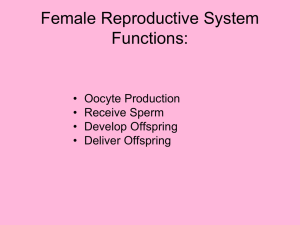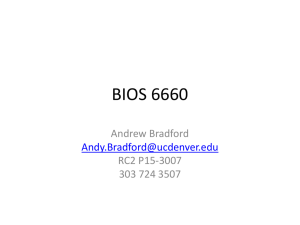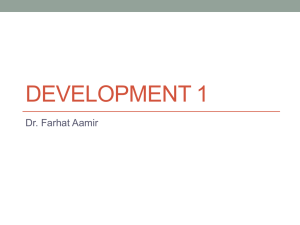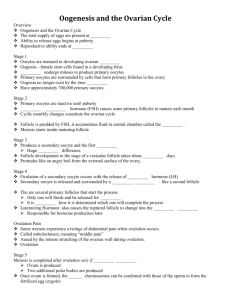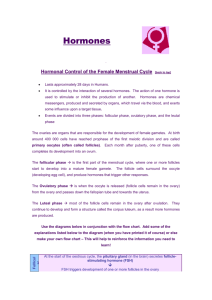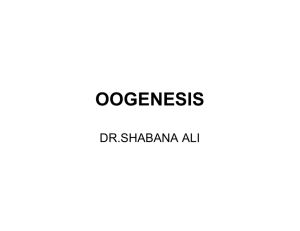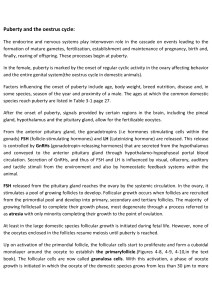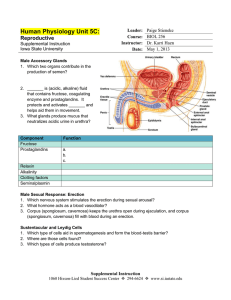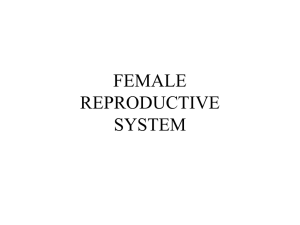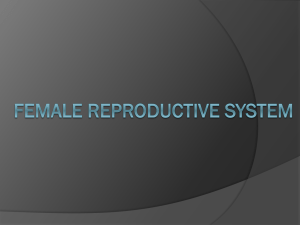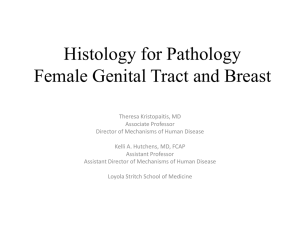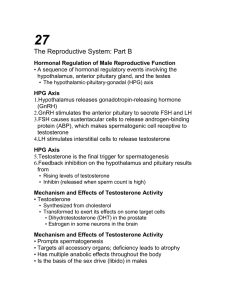16.2 part 1
advertisement
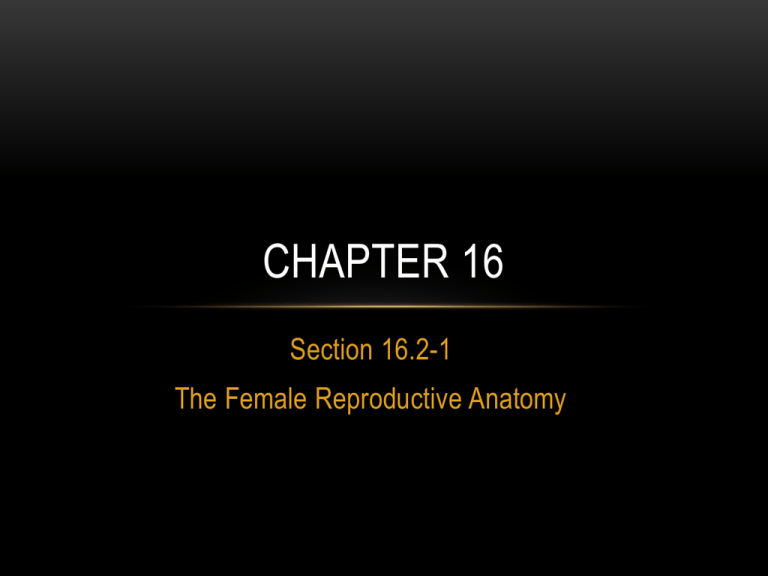
CHAPTER 16 Section 16.2-1 The Female Reproductive Anatomy FEMALE REPRODUCTIVE STRUCTURES SIDE VIEW OF FEMALE REPRODUCTIVE SYSTEM FUNCTIONS OF STRUCTURES • Uterus or Womb • largest organ in the female reproductive system • muscular, hollow pear shaped chamber • where embryo and fetus development occurs • made of two major tissues: 1. A muscular outer lining. 2. Glandular inner lining called the endometrium. • Ovaries • female gonads, or primary reproductive organs • production of female sex hormones • production of egg cells • Fallopian Tubes (oviducts) • connect the ovaries to the uterus • Fimbria (s. fibrium) • finger like projections at the ends of each Fallopian tube • connect the Fallopian tubes with the ovaries during ovulation • Cervix • a band of muscle that separates the vagina from the uterus • Vagina • the muscular canal extending from the cervix to the outer environment • the birth canal OOGENESIS AND OVULATION • Oogenesis – the formation and development of mature ova. • Ova (s. ovum) – female egg cell. • Oocyte – an immature ovum or egg cell. • At birth, oocytes are already present within the ovary. • Oogenesis occurs in specialized cells in the ovaries called follicles. • A follicle contains two types of cells: a primary oocyte and cells of the granulosa. • The granulosa is the layer of cells that forms the follicle wall and provides nutrients for the developing oocytes. • Oogenesis begins when nutrient follicle cells surrounding the primary oocyte begin to divide. • As the primary oocyte undergoes cell division, the majority of cytoplasm and nutrients move to one end of the cell called a pole and forms a secondary oocyte. • The secondary oocyte contains 23 chromosomes. • The remaining cell, referred to as the first polar body, receives little cytoplasm and dies. • As the follicle cells surrounding the secondary oocyte multiply, a fluid filled cavity forms. • Eventually, the dominant follicle pushes outward, ballooning the outer wall of the ovary. • Constriction of blood vessels and enzymes act to weaken the ovarian wall above the follicle. • The outer surface of the ovary wall bursts and the secondary oocyte is released, in a process called ovulation. • The remaining follicle cells remain within the ovary and are transformed into the corpus luteum. • The corpus luteum is a mass of follicle cells that secrete estrogen and progesterone, pregnancy hormones. FORMATION OF OVA primary follicle containing primary oocyte follicle with early fluid-filled cavity granulosa cells mature follicle ruptured follicle fully formed corpus luteum developing corpus luteum secondary oocyte • If pregnancy does not occur, the corpus luteum degenerates after about 10 days. • After it’s release from the ovary, the secondary oocyte is swept into the funnel shaped end of the Fallopian tube by the fimbria. • The secondary oocyte is moved along the Fallopian tube by cilia. • If sperm is present, fertilization will occur. • Once fertilized, the secondary oocyte then undergoes another unequal division of cytoplasm and nutrients to develop the ovum. • The part with the majority of the cytoplasm becomes the ovum, the other part becomes the second polar body and deteriorates. • If the secondary oocyte is not fertilized, it will deteriorate with 24 hours and die. When this occurs, the woman will undergo a menstrual cycle.
